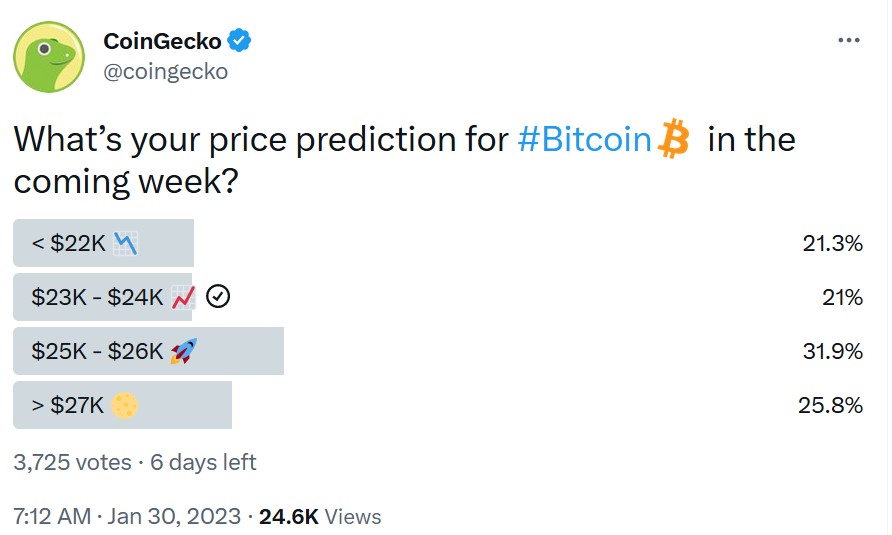
Cyberpunk movies feature advanced technology, such as computers and the internet, in a dystopian future setting.
Cyberpunk movies are a subgenre of science fiction that emerged in the 1980s. They typically take place in a dystopian future, often in a city characterized by high-tech, advanced technology and a breakdown of social order.
They often feature advanced forms of artificial intelligence, virtual reality, and cybernetically enhanced characters and worlds. The stories often focus on the intersection of technology and humanity and typically depict a society where the lines between man and machine are blurred, and where the power dynamics between governments, corporations and individuals are in constant flux.
Cyberpunk movies are known for their unique visual style, complex characters and thought-provoking stories that explore the impact of technology on humanity and the implications of a rapidly advancing world.
Here are top nine cyberpunk films that can spark a lifelong interest in the genre:
Blade Runner (1982)
Blade Runner is a 1982 science fiction film directed by Ridley Scott and starring Harrison Ford. The movie is set in a dystopian future in which genetically engineered humanoids, called Replicants, are used for dangerous or menial work on Earth and off-world colonies.
The story follows a “Blade Runner” named Deckard (Ford), who is tasked with hunting down and “retiring” rogue replicants. The film explores themes of humanity, identity and the intersection of man and machine.
The film’s visuals and its depiction of a decaying, neon-lit Los Angeles have become iconic, and it has since become a cult classic and a defining film of the cyberpunk genre. It’s also considered as one of the best science fiction films ever made and has a lasting impact on science fiction filmmaking.
‘Blade Runner’ (1982, Ridley Scott) pic.twitter.com/tWnvWKbwAV
— Lenscap (@Ienscap) January 23, 2023
The Matrix (1999)
The Matrix is a 1999 science fiction film directed by the Wachowskis and starring Keanu Reeves. The movie is set in a dystopian future where humanity is trapped inside a simulated reality created by sentient machines in order to pacify and subdue them while their bodies are used as an energy source.
The story follows Neo (Reeves), a hacker who discovers the truth about the Matrix and joins a rebellion against the machines, led by Morpheus (Laurence Fishburne) and Trinity (Carrie-Anne Moss).
The film explores themes of virtual reality, artificial intelligence and rebellion and revolutionized the action genre with its use of “bullet time” special effects and wire-fu choreography. It has since become a cultural phenomenon and has had a significant impact on popular culture.
Akira (1988)
Akira is a 1988 anime film directed by Katsuhiro Otomo. It is set in a post-apocalyptic version of Tokyo called Neo-Tokyo, 31 years after the city was destroyed by a mysterious explosion. The story follows a biker named Kaneda and his friend Tetsuo, who gains powerful psychic abilities after a motorcycle accident.
The film explores themes of power, technology and identity, as Tetsuo’s abilities spiral out of control and threaten to destroy the city. The animation and storytelling in Akira are considered groundbreaking, and it is widely considered one of the best anime films of all time and a defining film of the cyberpunk genre. The film has also been influential on Western animation, comics and film.
Ghost in the Shell (1995)
Another iconic anime film, directed by Mamoru Oshii, Ghost in the Shell explores themes of artificial intelligence, consciousness and the nature of humanity. The movie is set in a future where humanity has become heavily cyborgized and follows a cyborg counter-cyberterrorist field commander and leader of Public Security Section 9, Motoko Kusanagi, and her team as they hunt a mysterious hacker known as the “Puppet Master.”
The animation and storytelling in Ghost in the Shell are widely considered some of the best in anime, and it is considered a classic in the cyberpunk genre. The film has also been influential on Western animation, comics and film and has been adapted into several other media forms.
Neuromancer (1984)
Neuromancer is a science fiction novel by William Gibson, published in 1984. It is one of the most famous and influential books in the cyberpunk genre, which combines elements of science fiction and noir fiction.
The story is set in a dystopian future where the world is dominated by powerful corporations and follows the adventures of a washed-up hacker named Case, who is recruited by a mysterious figure called the Wintermute to pull off the ultimate hack. The novel explores themes of artificial intelligence, virtual reality and the blurring of the line between humans and machines.
The Terminator (1984)
The Terminator is a 1984 science fiction film directed by James Cameron and written by Cameron and Gale Anne Hurd. The film stars Arnold Schwarzenegger as the titular “Terminator,” a cyborg assassin sent back in time to kill Sarah Connor (Linda Hamilton), the mother of a future resistance leader against Skynet, an artificial intelligence that becomes self-aware and starts a nuclear war.
Michael Biehn plays Kyle Reese, a soldier from the future sent back in time to protect Sarah. The film explores the concept of time travel and the possibility of machines becoming self-aware and turning against humanity. It is considered a classic and has spawned multiple sequels and spin-offs.
RoboCop (1987)
RoboCop is a science fiction action film directed by Paul Verhoeven and written by Edward Neumeier and Michael Miner. The film takes place in a crime-ridden Detroit, Michigan in the near future, where police officer Alex Murphy (Peter Weller) is brutally murdered and subsequently resurrected as the cyborg police officer RoboCop.
It’s 1987, a cyborg working for the police is heading towards the city to stop the chaos once and for all #synthwave #80s #80smusic #robocop #cybercity #cyberpunk #darkwave #musician #retromusic pic.twitter.com/nI6upemD4f
— D r e a m k i d (@dreamkid83) January 24, 2023
The film explores themes of crime, corruption and the blurring of the lines between human and machine. RoboCop is programmed with three primary directives: serve the public trust, protect the innocent, and uphold the law. The film was both a commercial success and a critical success and has since spawned a franchise that includes multiple sequels, television series and a reboot.
Tron (1982)
Tron is a 1982 science fiction film directed by Steven Lisberger and written by Lisberger and Bonnie MacBird. The film stars Jeff Bridges as Kevin Flynn, a computer programmer who becomes trapped inside a computer-generated virtual world called “The Grid.”
Once inside, he must compete in gladiatorial games in order to escape. The film explores themes of technology and artificial intelligence and the concept of a virtual world existing within a computer system.
Tron was a box office disappointment, but later, it became a cult classic, credited with pioneering computer-generated imagery and influencing the development of the cyberpunk genre. It also spawned a franchise, which includes multiple sequels, a Disney XD animated series and a reboot.
Total Recall (1990)
Total Recall is directed by Paul Verhoeven and written by Ronald Shusett, Dan O‘Bannon and Gary Goldman. It stars Arnold Schwarzenegger as Douglas Quaid, a construction worker who begins to suspect that his life is not what it seems and that his memories of his past may have been implanted.
The film is based on the Philip K. Dick story We Can Remember It For You Wholesale and explores the nature of reality and the consequences of altering memories. The film is set in a future where Earth is experiencing severe overpopulation, and people are looking for an escape by traveling to a colony on Mars. Critics praised the film’s special effects, action sequences and performances, and it was a commercial success, grossing over $261 million worldwide.
from Cointelegraph.com News https://ift.tt/hYBRpn3










































